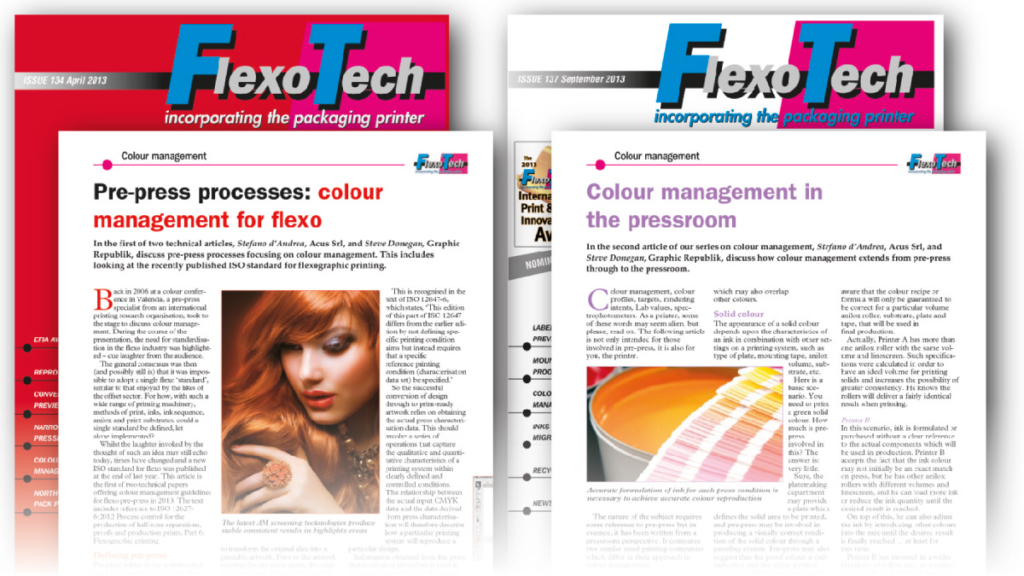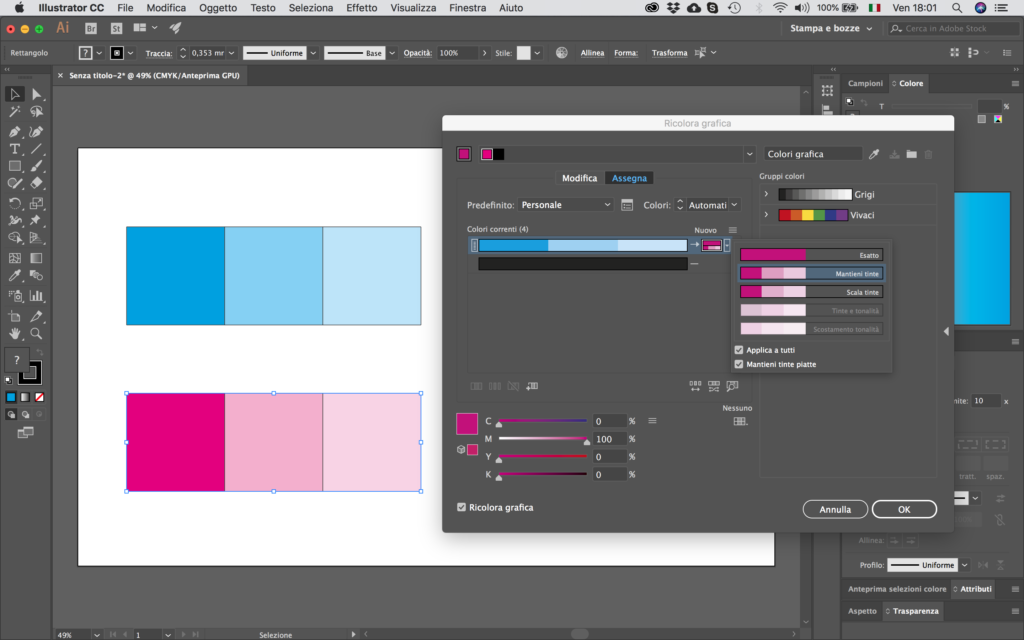How many resolutions do we need to know in flexography?
There are four important information related to resolution within the flexo workflow.
1# The resolution of the anilox roll, or its line-screen or cell-count, that is the number of cells engraved on the surface by linear unit of measure. We express it, in the metric system, in lines per centimetre (l/cm, lpcm) or -less commonly- cells per centimetre (c/cm) or in the imperial system in lines per inch (l/in, lpi) or cells per inch (cpi).
It is important to ensure that the size of the opening of a single cell does not allow the smallest dot on the plate to dip into the cavities of the engraving.
For example, an anilox at 400 l/cm (1000 cpi) will have a cell opening of ~22 μm, and therefore it can easily support a 2% dot at 54 l/cm (133 lpi) or a hybrid screen with a diameter of ~ 22 μm.
2# The print resolution, that is the plate linescreen, the number of printing dots per unit of measure, and it is expressed in lines per centimetre (l/cm, lpcm) or in lines per inch (l/in, lpi) .
Each dot is formed by a group of a whole number of pixels of the imaging unit.
For example, a 2% dot of a 54 l/cm (133 lpi) round dot screen, imaged at 2540 dpi, will consist of 7 pixels and will have a size of approximately 30 μm.
The print line-screen is chosen according to the type of product to be printed and is bound to the resolution of the anilox.
3# The resolution of the bitmap file used for plate imaging, that is the one that determines the size of the pixels that compose the image that is used to image the plate. We express it in dots per inch (dpi) and the most common resolutions used in flexography are 2400, 2540 and 4000 dpi.
For example, to image a 5% dot at 120 lpi (48 l/cm) we will have:
• groups of ~20 pixels (each 10.6 x 10.6 μm) at 2400 dpi
• groups of ~23 pixels (each 10 x 10 μm) at 2540 dpi
• groups of ~52 pixels (each 6.35 x 6.35 μm) at 4000 dpi
4# The resolution and type of the laser that physically images the pixels of the bitmap file on the plate. Pixels on bitmap file are squared but laser beams (available on typical flexo imaging units) are either round or rectangular:
• Round gaussian spot with ~ 8÷16 µm Ø (~ 1600 dpi up to 4000 dpi)
• Squared rectangular ~10,6×2,5 µm (~ 9600 dpi)
The laser spot shape is therefore used to image the square shape of the pixel in the best possible way:
• One pixel at 4000 dpi (6.35 x 6.35 μm) is imaged by 1 hit of gaussian laser beam having a Ø of ~8µm
• One pixel at 2400 dpi (10,6 x 10,6 µm) is imaged by 4 hits of squared laser beam




Buongiorno, ho una macchina da stampa flexo per shoppers gia confezionati, volevo sapere che tipo di alinox dovrei usare, quelli vecchi sono danneggiati, per avere una stampa pulita. Si consideri il fatto che io stampo massimo 2 colori e uso inchiostri ad acqua. Grazie
Salve Vinicio, immagino che questi shoppers siano in carta e che i soggetti grafici si limitino a testi e fondi senza grosse necessità di immagini retinate con sfumature, giusto? In tal caso un volume attorno ai 5 cm³/m² (260 c/cm) potrebbe già essere un buon compromesso. Se le necessità includono anche, ad esempio, la stampa di un inchiostro bianco che risulti coprente su una carta kraft avana, magari è necessario un volume maggiore.
Potrebbe fare delle prove con una tirella che simula il trasferimento di inchiostro direttamente sul vostro supporto: ogni fornitore di anilox o di inchiostri dovrebbe essere in grado di fornire un supporto simile.
Saluti